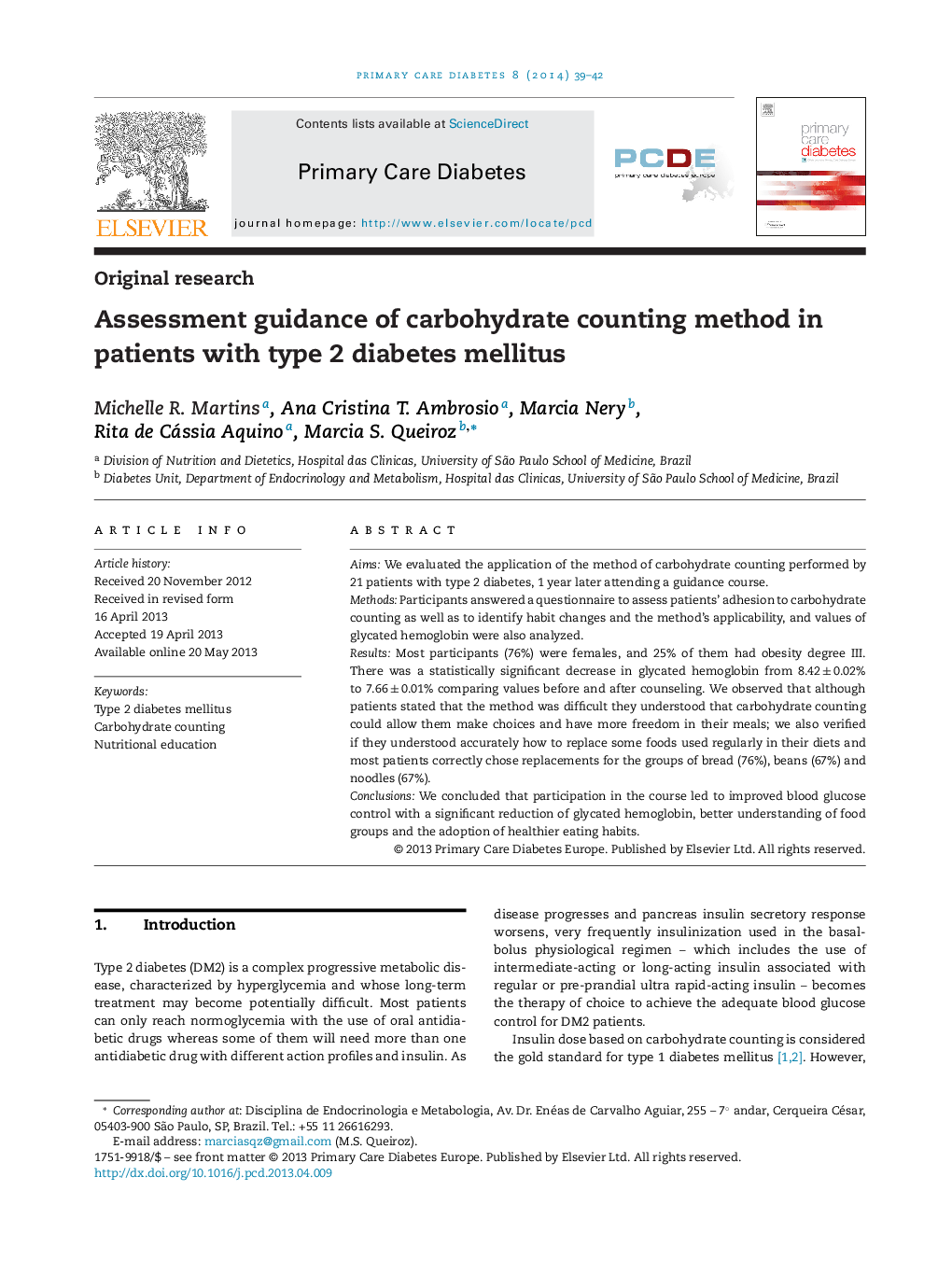| Article ID | Journal | Published Year | Pages | File Type |
|---|---|---|---|---|
| 5871131 | Primary Care Diabetes | 2014 | 4 Pages |
AimsWe evaluated the application of the method of carbohydrate counting performed by 21 patients with type 2 diabetes, 1 year later attending a guidance course.MethodsParticipants answered a questionnaire to assess patients' adhesion to carbohydrate counting as well as to identify habit changes and the method's applicability, and values of glycated hemoglobin were also analyzed.ResultsMost participants (76%) were females, and 25% of them had obesity degree III. There was a statistically significant decrease in glycated hemoglobin from 8.42 ± 0.02% to 7.66 ± 0.01% comparing values before and after counseling. We observed that although patients stated that the method was difficult they understood that carbohydrate counting could allow them make choices and have more freedom in their meals; we also verified if they understood accurately how to replace some foods used regularly in their diets and most patients correctly chose replacements for the groups of bread (76%), beans (67%) and noodles (67%).ConclusionsWe concluded that participation in the course led to improved blood glucose control with a significant reduction of glycated hemoglobin, better understanding of food groups and the adoption of healthier eating habits.
